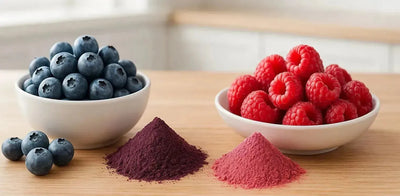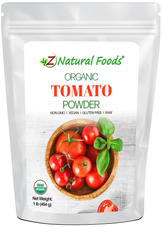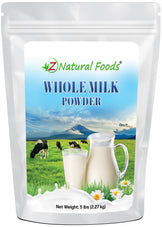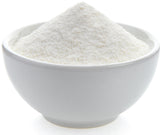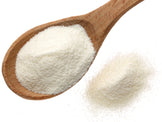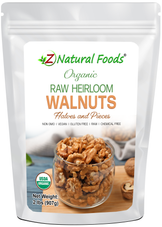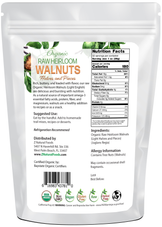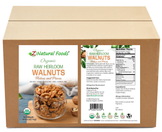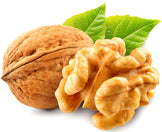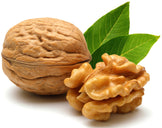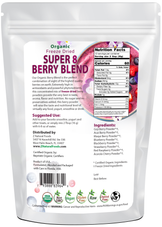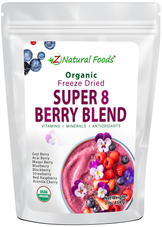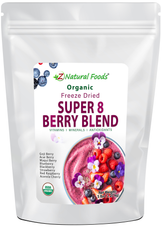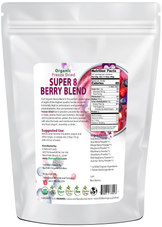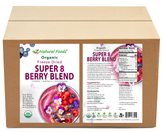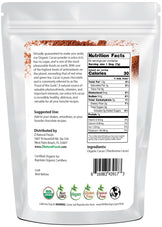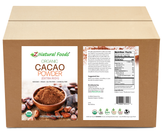Description
Description
Today’s article is the final in a series of diet vs. lifestyle comparisons focusing on the scientifically proven Mediterranean lifestyle.
This lifestyle, which we consider a cornerstone of our discussion, has been compared (over the last few weeks) to the ketogenic and pescatarian diets.
In this final installment, we'll delve into the worst offender to our intelligence, morals, and tastebuds: The Standard American Diet.
To review the previous articles in this series, please review these articles here:
- An Introduction to the Mediterranean Lifestyle: 3 reasons this lifestyle should NEVER be called a diet
- Three Reasons Why Organic Tomatoes are a Core Ingredient for the Mediterranean Diet
- Top 5 Most Important Superfoods for your Mediterranean Lifestyle
- Why walnuts are the best nut in the Mediterranean Diet
- Mediterranean Lifestyle vs. Ketogenic Diet: Understanding the Superiority of the Mediterranean Lifestyle
- The Mediterranean Lifestyle vs The Pescatarian Diet
As we get started, let’s do a quick review regarding the distinction between diet and lifestyle:
- Lifestyle factors are the most accurate indicator of overall health success.
- Diets don’t prioritize all the essential factors like food quality to achieve health and weight modification goals.
- It's a fact that diets lack proof of long-term success in maintaining a healthy body weight and improving health markers. This further highlights the superiority of the Mediterranean lifestyle.
- It's important to note that short-term fad diets never contribute to better health.
- Living a lifestyle that requires compliance and consistency always gets you to the winner's podium.
A few critical elements to the success of any lifestyle are:
- The unwavering commitment to the quality and freshness of the ingredients.
- Balancing work and leisure time, incorporating lifestyle habits like going home for lunch, taking a siesta, and engaging in regular physical activity that challenges you (mentally and physically) is equally essential. This balance gives us a sense of control over our health and well-being.
- Dedication to the above principles ensures you always consume the best, most nutritious foods and faithfully live this lifestyle, providing balance and reassurance in your health choices.
- All of the above elements are critical. You can’t just choose which ones you want to do and ignore the others. They are all equally important. If you pick to do one out of four, then only expect 25% success. If you want 100% on your results, you must put in 100% effort.
Unfortunately, fad diets are popular because the fast-paced Western lifestyle often leaves us feeling like we have so little time to create delicious meals and maintain a healthy work/play balance.
However, the “I don’t have the time” excuse is just that- an excuse. Look at how many hours you spend in the fake world of social media, which provides no benefit to your well-being (As more research emerges, we are learning how bad social media really is for our health).
You have all the time you need; it is simply a matter of how you use your time. Technology has streamlined our ability to acquire quality raw ingredients worldwide, so there are no more excuses. So, please look in your bag of excuses and note that it is now empty.
Being adaptable and incorporating tools to help you stay compliant is never wrong. Remember, your commitment to compliance is the key to your health journey, and this dedication will keep you motivated and on track.
While we believe that functional superfoods, in various forms, offer a convenient way to support nutrient intake, and their versatility allows for endless culinary creations, they should not be a substitute for a fresh homemade meal made with quality ingredients and love.
Instead, they can be added to support and strengthen the nourishing aspects of your chosen lifestyle. They are a powerful tool in your quest for a healthier lifestyle, allowing you to adapt and control your health journey.
The Mediterranean Diet vs. the Standard American Diet
Before we delve into the Standard American Diet (SAD), let’s take a moment to appreciate the enduring benefits of the Mediterranean lifestyle (MED).
5 Powerfully Healthy Benefits of the Mediterranean diet
This lifestyle, with its focus on fresh, high-quality foods and a balanced approach to nutrition, has been proven time and again to be superior to any short-term diet. Here are five fantastic benefits of the MED diet and lifestyle.
1) Polyphenolic Compounds
The MED lifestyle is known for being an outstanding source of specific, unique compounds known as polyphenols. This lifestyle focuses on fresh, high-quality foods rich in these compounds.
Examples include olive oil, coffee, walnuts, chocolate, and berries. Polyphenols are a term used to describe a general category of compounds found in a broad spectrum of fruits, vegetables, and tea that work as “reducing agents” along with other compounds known as antioxidants to support a healthy inflammation response and the body's ability to protect and repair damaged tissue caused by oxidative stress.
While over 8,000 polyphenols have been identified, some of the most common are flavonoids, flavonols, and anthocyanins. While each of these foods is powerful as an individual entity, the effects of combining them bring much more significant results. The concept of synergy teaches us that the whole is greater than the sum of its parts. When it comes to these powerful foods, the wide range of potent compounds you consume when following this lifestyle has a broader spectrum and nourishing effect than any specific food within that matrix.
2) A Wide Range of Nourishing Fats
There are two primary types of fats: saturated and unsaturated. Structurally, saturated fats have no double bonds, whereas unsaturated fats have one or more bonds.
- A fat with one double bond is considered monounsaturated, whereas if it has more than one, it is polyunsaturated.
- Polyunsaturated fats are divided into two classes: omega-3 and omega-6 fatty acids. EPA and DHA are long-chain omega-3 polyunsaturated fatty acids abundant in fish and shellfish.
- An important point to understand is that while specific foods may be higher in a particular type of fat, all foods contain a mixture of saturated, mono, and polyunsaturated fats.
Nuts and seeds are a significant player in the MED lifestyle and contain most of their calories from fat, making them energy-dense, high-calorie foods. Consuming a wide range of nuts and seeds (like flax, chia, walnuts, pistachios, and almonds) ensures you get a nourishing amount of whole-food polyunsaturated fatty acids, the most abundant one being omega-6 linoleic acid.
However, around 12% of walnuts' and up to 50% of flax seeds' fatty acid profile comes from the Omega-3 fatty acid Alpha linoleic acid(ALA), making them a well-balanced fatty acid food.
The following was stated in a study discussing dietary ALA's effects on reducing the cardiovascular risk factors of inflammation and lipid profile imbalances in hypercholesterolemic men and women:
- Alpha-linolenic acid (ALA) reduces cardiovascular disease (CVD) risk, possibly by favorably changing vascular inflammation and endothelial dysfunction.
- Inflammatory markers and lipids and lipoproteins were assessed in hypercholesterolemic subjects (n = 23) fed two diets low in saturated fat and cholesterol and high in PUFA varying in ALA (ALA Diet) and linoleic acid (LA Diet) compared with an average American diet (AAD).
- The ALA Diet provided 17% energy from PUFA (10.5% LA; 6.5% ALA); the LA Diet provided 16.4% energy from PUFA (12.6% LA; 3.6% ALA); and the AAD provided 8.7% energy from PUFA (7.7% LA; 0.8% ALA).
- The ALA Diet decreased C-reactive protein (CRP, P < 0.01), whereas the LA Diet tended to decrease CRP (P = 0.08).
- Although the two high-PUFA diets similarly decreased intercellular cell adhesion molecule-1 vs. AAD (-19.1% by the ALA Diet, P < 0.01; -11.0% by the LA Diet, P < 0.01), the ALA Diet decreased vascular cell adhesion molecule-1 (VCAM-1, -15.6% vs. -3.1%, P < 0.01) and E-selectin (-14.6% vs. -8.1%, P < 0.01) more than the LA Diet.
- Changes in CRP and VCAM-1 were inversely associated with changes in serum eicosapentaenoic acid (EPA) (r = -0.496, P = 0.016; r = -0.418, P = 0.047) or EPA plus docosapentaenoic acid (r = -0.409, P = 0.053; r = -0.357, P = 0.091) after subjects consumed the ALA Diet.
- The two high-PUFA diets decreased serum total cholesterol, LDL cholesterol, and triglycerides similarly (P < 0.05); the ALA Diet decreased HDL cholesterol and apolipoprotein AI compared with the AAD (P < 0.05).
Therefore, it was concluded that “ALA appears to decrease CVD risk by inhibiting vascular inflammation and endothelial activation beyond its lipid-lowering effects.”
The fatty acid profile from whole dairy foods
Some primary protein and fat sources in the MED lifestyle come from whole, full-fat dairy like milk, cheese, and yogurt.
For a long time, it has been believed that all fats are created equal and that your dietary intake should be minimal to be healthy. Well, modern-day science and research have entirely debunked this theory. What we know as an indisputable fact is that all nourishing food-based fats have wonderfully unique qualities that may support optimal well-being and longevity when consumed in a balanced manner. Nutritious fats are necessary for a quality diet for various reasons, such as:
- They support healthy, balanced hormones and brain and heart health.
- They are also a nourishing source of essential fat-soluble vitamins(A, D, & K).
However, lifestyles low in nutritious fats have been linked to vitamin deficiencies, hair loss, weakened immune response, and a host of other issues. The fats contained in whole dairy foods are shown to be highly complex and provide the body with great nourishment.
According to a review titled Composition, structure, and absorption of milk lipids: a source of energy, fat-soluble nutrients, and bioactive molecules, “Milkfat is not only a source of bioactive lipid components, but it also serves as an important delivery medium for nutrients, including the fat-soluble vitamins. Bioactive lipids in milk include triacylglycerides, diacylglycerides, saturated and polyunsaturated fatty acids, and phospholipids.”
“Among the 12 major milk fatty acids, only three (lauric, myristic, and palmitic) have been associated with raising total cholesterol levels in plasma, but their individual effects are variable-both towards raising low-density lipoproteins and raising the level of beneficial high-density lipoproteins. The cholesterol-modifying response of individuals to consuming saturated fats is also variable.”
Therefore, milkfat's composition, functions, and biological properties must be re-evaluated as the food marketplace moves increasingly towards more personalized diets.”
The breakdown of fatty acids in whole milk:
- 62% Saturated
- 30% Monounsaturated
- 4% Polyunsaturated
3) High-quality, locally raised, and produced protein sources
The Mediterranean lifestyle has some intrinsic differences based on geographic location.
For example, areas closer to the ocean eat more seafood, whereas those more inland eat more meat. The meat consumed is locally raised and slaughtered, and the seafood is caught fresh.
Meat offers a complex mixture of nutrients like collagen, coenzyme Q10, carnosine, L-carnitine, creatine, B12, and heme-iron, just to name a few. Fish offers a vastly superior fatty acid profile to any food as well. Therefore, they are essential elements of this lifestyle.
4) Why tradition, quality, and the correct ingredients matter
A critical point to understand regarding the MED lifestyle is that quality ingredients and tradition are never compromised. For example, the following was stated in a comparative study looking at the effects of cooking with olive versus sunflower oil on the antioxidant activity of tomatoes:
- Consumption of tomato products with olive oil significantly raised the plasma antioxidant activity (FRAP) from 930 +/- 150 to 1118 +/- 184 micromol/l, p <.01), but no effect was observed when the sunflower oil was used.
- The change (supplementation minus start values) in FRAP following the consumption of tomato products with oil was significantly higher for olive oil (190 +/- 101) than for sunflower oil (-9.6 +/- 99, p <. 005).
Therefore, it was concluded that “the study results show that consumption of tomato products with olive oil but not with sunflower oil improves the antioxidant activity of the plasma.”
5) Other essential aspects that play a vital role in the MED lifestyle
Often overlooked by every diet, spending time with loved ones, building a close-knit community, and daily physical activity are considered second to none when considering the amazing results of the MED lifestyle.
In a world-famous 80-year Harvard study about the importance of human connection and health, it was concluded that those who fared best were the ones who leaned on relationships with friends, family, and community.
In what is believed to be a study that represents one of the first systematic reviews and meta-analyses providing a comprehensive picture of high adherence to the Mediterranean lifestyle and overall physical fitness, the following was concluded: “A high Mediterranean lifestyle adherence was associated with higher levels of cardiorespiratory fitness, musculoskeletal fitness, and overall physical fitness in the entire adult population.”
It was further noted that age, sex, BMI, health, and smoking status intake did not influence the strength of these associations.
SAD: Standard American Diet
We describe the Standard American Diet as a mixture between a diet and a lifestyle of the most horrible eating and lifestyle habits known to man.
However, the acronym says it all. Yes, it is SAD on all levels, and the proof is in the pudding. There is literally nothing good to say about the standard American diet.
When looked at carefully, the standard American diet is based on a pyramid, the upside-down version of the MED lifestyle.
So, in simple terms, we are encouraged to do the complete opposite of a highly proven and successful lifestyle.
But, it gets worse…
Let’s look at some of its most endearing (yes, I am being sarcastic) attributes.
- It is a diet and not a lifestyle.
- It is a massive failure when looking at results specific to maintaining health markers and healthy body weight.
- Much of what you are instructed to consume is highly processed and refined, containing many artificial sweeteners and preservatives.
- In the standard American diet, the quality and freshness of ingredients are NEVER considered, and encouraging you to take the time to prepare food is practically nonexistent.
- Everything is about fast, prepackaged, precooked meals that, by definition, are no longer real food.
- The SAD diet also intensely focuses on calories, and while calories in versus calories out has its place, no lifestyle anywhere in the world prioritizes this principle.
- There is a total lack of regard for food, as we are one of the only countries where doctors are still telling their patients that all fats are created equal and that there is no difference between fresh and processed foods. Even worse, those practitioners are encouraging patients to eat only a minimal amount of quality fats.
It is sad to say that we are the most obese country and the leader in all conditions related to obesity, like metabolic syndrome, heart disease, immune and autoimmune issues; talk about a failing system.
The definition of insanity is doing the same thing repeatedly, expecting different results.
Yep, that pretty much sums up the standard American diet.
Study after study and report after report confirm the disastrous results of following the SAD. More articles are surfacing that discuss the alarming rate of cancers in our younger generation.
It was stated that while they are not sure of the exact reason for this issue, the one thing all of the people facing this issue have in common is obesity and the other conditions that manifest due to obesity.
You may be thinking, “But we drink coffee and wine every day, yet we are fatter and sicker than everyone else.”
The simple answer is when we are given an inch, we take a foot. Wine and coffee in the Mediterranean region are drank in small doses. Our average cup of coffee in America is 12-16 ounces, and our one drink daily is virtually a bottle of alcohol.
We struggle with the concept of moderation.
In conclusion, over the last several weeks, we have presented all the facts to show you how the MED lifestyle is superior in every way to the most common and popular fad diets and pseudo lifestyles.
At Z Natural Foods, we like to simply present facts and allow you to choose what you want to embrace to live your best life.
We think, in this case, the choice is straightforward.

